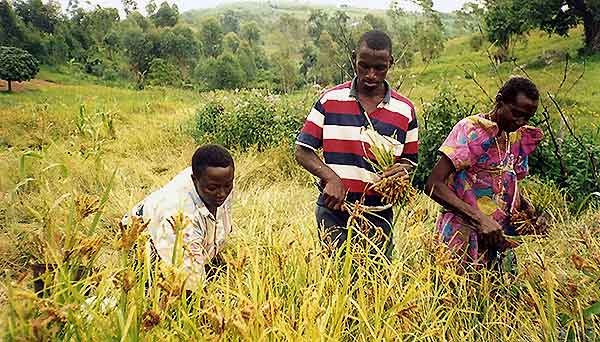
In observance of World Food Day 2014, the Food and Nutrition Technical Assistance III Project (FANTA) discusses the role of family farming in Uganda with Francis Muhanguzi, a FANTA Nutrition Specialist – Gender and Agriculture.
What does family farming in Uganda look like?
Most families/households in Uganda have farms—73 percent of the population over 10 years of age is directly employed in agriculture (83 percent of all women and 71 percent of all men). Family farming is characterized by a gradual but steady shift from subsistence to market-oriented farming, with most farms being small landholdings as opposed to large-scale farms. Traditional food crops that are grown for consumption, such as bananas, millet, sorghum, and potatoes, are also becoming cash crops that are sold for income.
What role does family farming play in Uganda?
Family farming is very important as it is a source of food for the household and the country at large. It also provides employment and income. In addition, family farming strengthens family and social ties in areas where communal farming still exists to prepare land, weed, and harvest.
What is primarily produced?
Milk, ghee, yogurt, crafts, hides, skins, etc. It depends on the enterprises that farmers are engaged in, which can be crop and livestock. The most common crop enterprises are bananas, potatoes, sorghum, simsim (sesame), maize, sunflower, coffee, tea, and rice. The most common livestock enterprises are dairy and beef cattle, goats, poultry, and pigs.
Enterprises for daily or regular income include poultry (eggs), dairy (milk), and bananas. Enterprises for periodic or seasonal income include beans, maize, simsim, and sunflower, while enterprises for annual income, which are harvested once a year, include coffee.
What is FANTA doing to support Uganda’s agricultural vision?
One activity we are currently working on with the Ministry of Agriculture, Animal Industry and Fisheries is to develop guidelines for agriculture extension workers to help family farmers choose crops and livestock to produce, taking into account the nutritional value of the products. The guidelines are meant to integrate nutrition into agricultural extension to provide farmers with the knowledge and skills to cultivate the most suitable crops or livestock that supports them both nutritionally and economically.
Photo: FANTA’s Francis Muhanguzi’s family members harvest millet from the family farm in Uganda.


